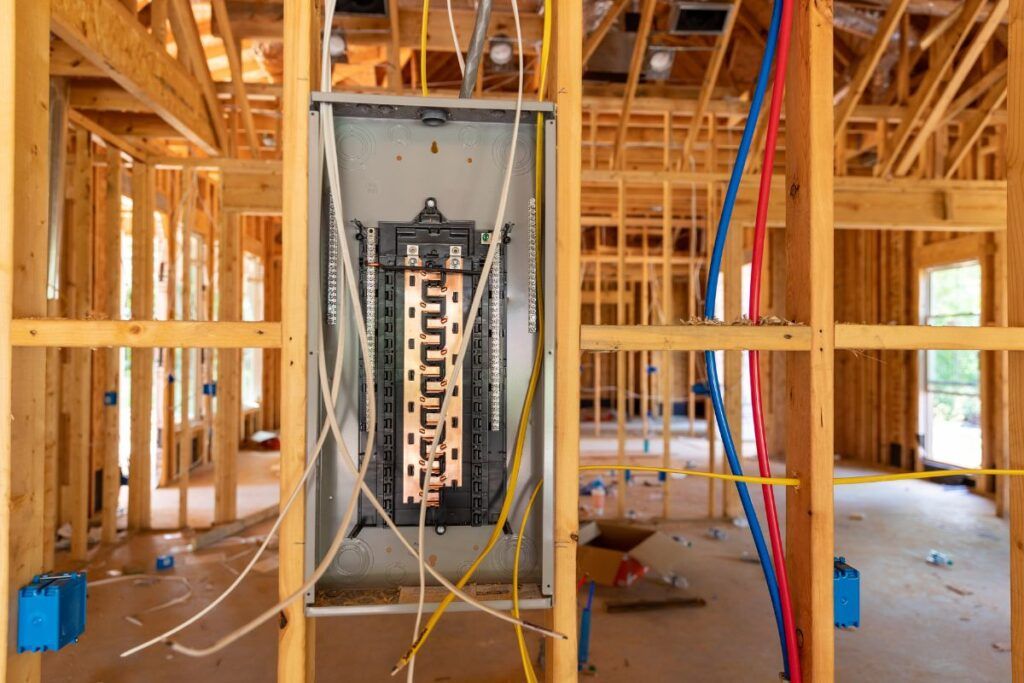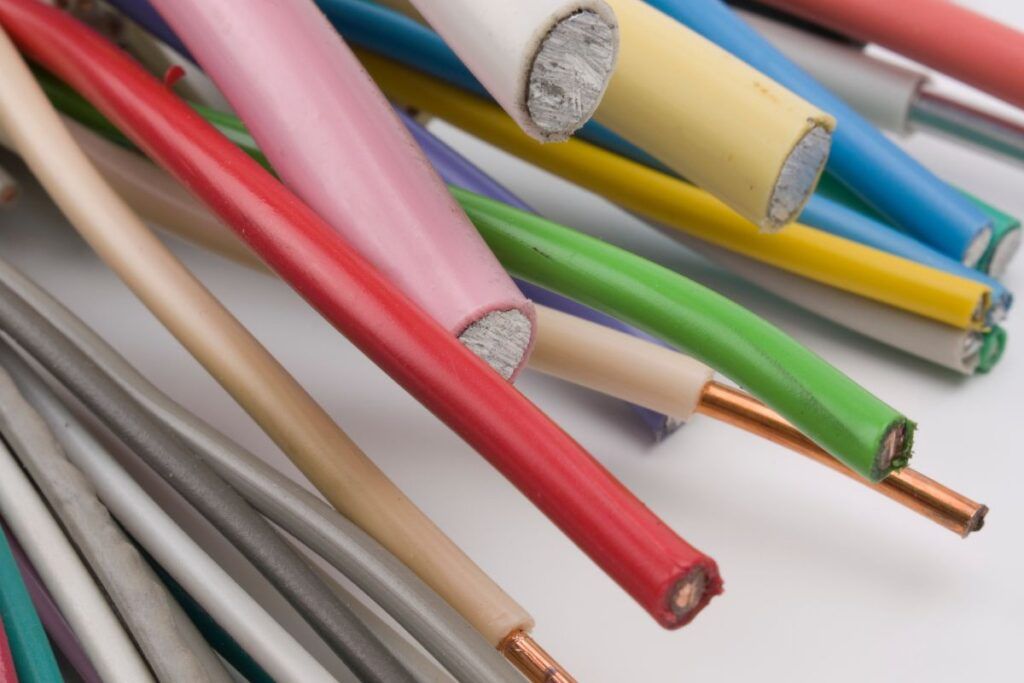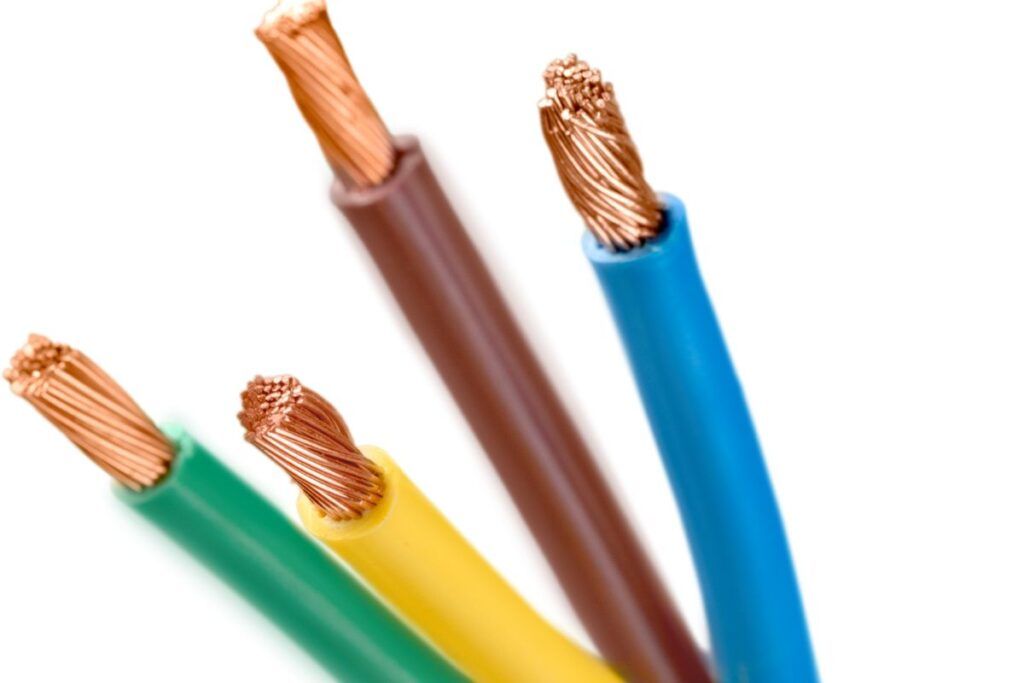The 50 amp circuit breakers are used to power multiple appliances. Besides this, the 50 amp service is used up by the kitchen oven alone. Some electric dryers will also require 50 amp breakers. Use the correct wire gauge, or you will burn your house.
Generally, it would be best to use a 6 gauge copper wire to run a 50 AMPs circuit. If you use aluminum or copper-clad aluminum wires, you should use a 4 gauge wire to replicate the copper wires. Since 50 Amps are mostly used to run heavy appliances, copper wire is recommended.
The wire size may vary depending on the building code, voltage drop, ambient temperature, etc. This article will guide you with the correct wire size required for 50 amp circuits and how these factors affect the size.

Check out our list of top-handpicked products for all your electrical, appliance, and HVAC system needs to keep your home running smoothly.
This post includes some affiliate links.What size of wire is best for the 50 amp circuits?
In the old days, a 50 amp circuit was enough for a house because people did not have so many electrical appliances.
Today, the house’s amps have increased to 150-200 amps due to the increase in these appliances.
50 amps are used to run a particular appliance.
The best wire size for a 50 amp circuit is 6 AWG.
The size can change based on various factors, like voltage drop, distance, wire material, etc.
Wire material
There are multiple wire materials to be used in electricity, but the two common ones are copper and aluminum wires.
- Copper wire is a much better choice because it has the following advantages:
- It is naturally high in conductivity after silver. So, they will hold enough current without any issues. That is why people prefer copper wires for longer distances.
- The wire is heat-resistant and holds enough current without overheating the wires.
- Copper wires have a green tarnish layer called Patina that gets oxidized when the wire remains exposed. This layer prevents corrosion in the wire.
- The wires are malleable, which prevents the fear of breakage.
Aluminum wires are still a good option because they are lightweight and cheap.
But, people prefer them less because they are not very good conductors of electricity and get overheated faster, especially when you use them for longer distances.
Aluminum is good for short distances.
But, people still prefer aluminum wires because they are cheaper than copper and are easier to handle. You can use them for shorter distances.
Another option is copper-clad aluminum wires.
These are a better version of aluminum that holds little copper benefits.
Copper-clad aluminum has some copper fittings at the ends.
They are good conductivity and heat resistance, better than aluminum, but not as good as pure copper.
However, the wire size of aluminum and copper-clad should remain the same.
You can use a 6 AWG copper wire for 50 amps if you use copper wires.
If you use aluminum or copper-clad aluminum, you must use a lower gauge than copper, i.e., a 4 AWG wire.
Another type of wire is copper-clad aluminum wire.
These have copper fittings at the end, which gives some copper benefits.
The wire gauge size should be 4 AWG.

Distance
The longer the distance, the higher the resistance.
That will heat the wire at a pretty fast rate.
You can deal with this by increasing the wire gauge.
Generally, a 6 AWG wire is enough for 50 amps.
But, if the distance is higher, for example, 150 feet, you should use a 4 AWG wire, which is generally rated for 70 amps.
The longer the distance, the higher the gauge.
For longer distances, the copper wire would be better than aluminum.
Voltage drop
It is another issue that determines the wire size for 50 amps.
Generally, the voltage drop remains around 3%. Sometimes, it rises to around 5%.
The higher the voltage drop, the more current you lose.
It can overheat the wires and result in fire hazards.
You can use smaller gauges to deal with this issue or increase the amperage to adjust the voltage drop.
Distance and voltage drop are linked.
For every 100 feet, the voltage drops by 20%. So, you need to use a higher gauge, like 2 or 4 AWG.
If the voltage drops to 20% for every 100 feet, it should be 30% for 150 feet and more for longer distances.
You will have to change the wire gauge accordingly.
You must use copper wire here since it can carry enough current without overheating.
Local building code
Before choosing the right wire size, you must consult the local or NEC code.
If your local codes are different from the NEC codes, you must prioritize the local codes and ignore the NEC codes.
The size of the wire can be different based on the codes of your living area.
You also much acquire permission for the electrical works.
Ground wire size for 50 amps
The ground wire only carries the extra current flow during a short circuit.
At other times, the wire does not carry any current.
So, you can opt for higher gauges that will be enough to carry the extra current during electrical accidents.
You can choose a 10 AWG copper wire and 8 AWG aluminum or copper-clad aluminum wire for the ground wire.
The wire sizes will handle up to 60 amps.
50 amp 2 pole wire size
Some houses use 240 volts.
If your house is the one, you will need two wires and one breaker for each wire.
The 2-pole 50 amp breaker will require 6 AWG wires.
The cable will contain four wires – red, black, white, and green.
The red and black are the hot wires, the white is neutral, and the green is the ground wire.
The wires’ size does not change much here despite the application method.
If the ampacity matches the wire size, everything will be perfect.
50 amp subpanel wire size
A 50 amp sub panel will require at least 3 to 6 AWG wires.
Here, I considered the distance around 55 feet.
If the distance is longer, I suggest you use thicker and lower gauge wires.
If the sub-panel distance from the main panel is 150 or 200 feet, you can use 4 AWG copper or 3 AWG aluminum or copper-clad wires.
If your panels are rated at 110-120 volts, the wire size for a 50 amp sub panel would be at least 2 AWG copper or 1/0 AWG aluminum for 200 feet.
For 100 feet, it would be 4 AWG copper and 3 AWG aluminum.
Will the wire size of 50 amps change with the machines?

The wire for 50 amps does not remain the same always.
It can change depending on various machines.
For example, the wire size for a 40 to 50-amp welder will be around 6 AWG. But, you cannot expect to choose a 6 AWG wire for every 50 amp welder.
Some experts suggest using a 10 AWG wire for a 50 amp welder.
However, this is ideal for welders used very often and not continuously.
But manufacturers suggest using 14 gauge wires for 130 amp materials.
It sounds absurd, but the experts know the best.
It applies to some ordinary appliances like stoves or generators.
Here is a guide sharing the different machines at 50 amps and the right wire gauge to run them:
- Air conditioner – 12 AWG
- Heater – 10 to 4 AWG
- Generator – 6 to 10 AWG
- Welder – 8 AWG
- Electric Charger – 6 to 8 AWG
- Stove – 6 AWG’
- Hot tub – 6 AWG
- Electric Range – 6 AWG
- RV Hookup – 4 AWG
Remember that the wire gauge sizes mentioned may change depending on the amperage.
If the materials are rated at 50 amps, most of them will do well in a 6 AWG wire, except for the RV Hookup, which requires a 4 AWG wire.
Water heaters rated at 30 amps can use a 10 gauge wire, and chargers at 40 amps will run on a 10 gauge wire.
The amperage rating is crucial when deciding the gauge wire for any device.
What happens if you use the wrong wire size?

When you mention ‘wrong wire size,’ two things come to mind – either the wire gauge is small for the amperage rating or oversized.
In most cases, using an oversized and thicker wire will not cause any issues.
It will keep the wires safe and run the appliances smoothly without overheating or short circuits.
Besides, you can keep the wire size the same if you think of changing the service to a higher amp.
So, that will reduce the cost of buying the wire.
But, if the wire size is smaller, it will be dangerous.
The wire won’t be able to handle the electricity the service runs.
As a result, the wire will overheat, melt, and start a fire.
So, you can use the wrong size wire provided it is a thicker gauge.
But never opt for the thinner or smaller wire gauges.
What different wire gauges can a 50 amp service handle?
The right size of wire for 50 amps is 6 AWG.
But it can also handle other wire gauges that are thicker.
But it won’t tolerate wire gauges thinner than 6 AWG.
The 50 amp service will easily run on 2 and 4-gauge wires.
Since these wires are thicker than 6 AWG, these two wires will easily carry a current of 50 amps without overheating.
But, the 8, 10, and 12 gauge wires are thinner than the 6 AWG.
So, you cannot use these wire gauges for a 50 amp service.
6 AWG is the perfect wire gauge for a 50 amp service.
Using these thin wires can overheat them, melt them, and start a severe electrical fire accident.
What does the NEC say about it?

NEC, or National Electric Code, also recommends customers to use a 6 AWG wire for 50 amp service.
NEC also suggests applying the 80% rule for every circuit installed in the house.
For example, if you have a 50 amp circuit, its 20% is 62.5 amps.
So, it would be best to look for a wire that can handle 62.5 amps.
Generally, a 6 AWG will handle up to 65 amps easily.
That is why a 6 AWG wire will be a perfect wire size for a 50 amp service.
Table and chart of different wire sizes
The chart I will share here can help you get the right wire sizes depending on the distance, wire material, volts, and phases.
The voltage drop considered here is 3%.
Single phase
120 volt
| Distance (in ft) | Copper wire | Aluminum wire |
|---|---|---|
| 50 ft | 6 AWG | 4 AWG |
| 75 ft | 6 AWG | 4 AWG |
| 100 ft | 4 AWG | 3 AWG |
| 200 ft | 2 AWG | 1/0 AWG |
| 250 ft | 1 AWG | 2/0 AWG |
| 300 ft | 1/0 AWG | 3/0 AWG |
240 volt
| Distance (in ft) | Copper wire | Aluminum wire |
|---|---|---|
| 50 ft | 6 AWG | 4 AWG |
| 75 ft | 6 AWG | 4 AWG |
| 100 ft | 6 AWG | 4 AWG |
| 200 ft | 4 AWG | 3 AWG |
| 250 ft | 4 AWG | 2 AWG |
| 300 ft | 3 AWG | 1 AWG |
480 volt
| Distance (in ft) | Copper wire | Aluminum wire |
|---|---|---|
| 50 ft | 6 AWG | 4 AWG |
| 75 ft | 6 AWG | 4 AWG |
| 100 ft | 6 AWG | 4 AWG |
| 200 ft | 4 AWG | 3 AWG |
| 250 ft | 4 AWG | 3 AWG |
| 300 ft | 4 AWG | 2 AWG |
3-phase
120 volt
| Distance (in ft) | Copper wire | Aluminum wire |
|---|---|---|
| 50 ft | 6 AWG | 4 AWG |
| 75 ft | 6 AWG | 4 AWG |
| 100 ft | 4 AWG | 3 AWG |
| 200 ft | 2 AWG | 1/0 AWG |
| 250 ft | 1 AWG | 1/0 AWG |
| 300 ft | 1/0 AWG | 2/0 AWG |
240 volt
| Distance (in ft) | Copper wire | Aluminum wire |
|---|---|---|
| 50 ft | 6 AWG | 4 AWG |
| 75 ft | 6 AWG | 4 AWG |
| 100 ft | 6 AWG | 4 AWG |
| 200 ft | 4 AWG | 3 AWG |
| 250 ft | 4 AWG | 3 AWG |
| 300 ft | 4 AWG | 2 AWG |
480 volt
| Distance (in ft) | Copper wire | Aluminum wire |
|---|---|---|
| 50 ft | 6 AWG | 4 AWG |
| 75 ft | 6 AWG | 4 AWG |
| 100 ft | 6 AWG | 4 AWG |
| 200 ft | 4 AWG | 3 AWG |
| 250 ft | 4 AWG | 3 AWG |
| 300 ft | 4 AWG | 2 AWG |
Whenever you select the gauge number, remember that the lower gauge number has a thicker wire with a larger diameter.
The higher gauge number has thinner wire in a smaller diameter.
So, do not get confused while selecting the right wire gauge for 50 amps or any other amps.
Final thoughts
The best wire size for 50 amp service is a 6 AWG wire.
The wire size will change based on various factors, like wire material, voltage drop, and distance.
So, the wire size is 6 AWG copper or 4 AWG aluminum.
The longer the distance, the more the resistance and the voltage drop.
So to manage this, you need a thicker wire gauge, like 1 or 2 AWG.
The wire size also changes based on the electrical service phase and the voltage.
The table I shared gives you detailed information about it.
The wire for grounding would be 8-10 AWG.
Related Articles:
- Wire Size For 80 Amp Service: Complete Table And Chart
- What Size Wire Do I Need For 125 AMP Service?
- What Size Wire Do I Use For 150 AMP Service?
- Wire Size For 100 AMP Service: Complete Table And Chart
- Wire Size For 200 AMP Service: Complete Table And Chart
- Wire Size For 400 Amp Service: Complete Table And Chart
- Size Of Ground Wire For 200 Amp Service: Complete Guide With Table
FAQs
How much will it cost to install a 50 amp service?
The cost of installing a 50 amp service depends on various factors.
The wire cost per meter is around $3 to $5, and $60 for the outlet and service box. $50 to $100 is for the breaker at the panel.
Data Source: National Electrical Code, NEC Wire Table, Electrical wiring, Home wiring.


